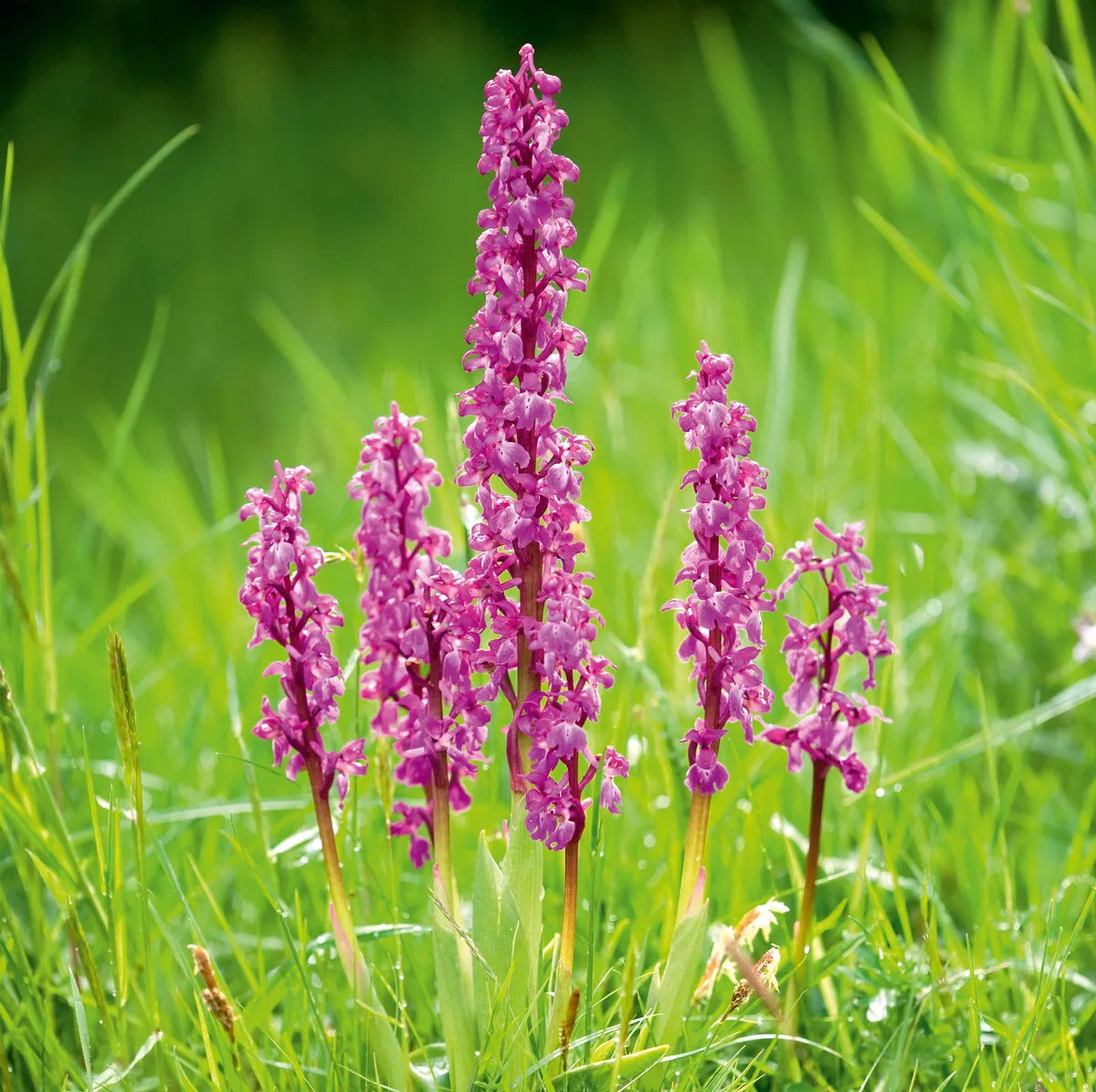In the narrowest reaches of northern England, around the headwaters of the River Tees there is a botanical hotspot of international importance for its arctic and alpine species. Upper Teesdale, in the North Pennines, lies on a high elevation band of limestone, the River Tees rising from springs high on Cross Fell (893m). Flowing through high elevation areas of peat, its water becomes translucent burnt umber as it tumbles over the dramatic rocky Cauldron Snout waterfall, passing through steep-banked valleys and eventually plunging 21m over the dark rock formations of High Force waterfall.
Geology heavily influences plant life, and in this region a lower band of limestone was intruded by hard igneous rock (dolerite) of the Great Whin Sill 300 million years ago creating a rare, coarse, crystalline material known as sugar limestone. This forms frequent outcrops as you navigate the upland fells and discover their considerable botanical treasure. The climate here is unforgiving, the chill and sense of desolate beauty exhilarating and the habitats diverse, from low-lying hay meadows, England’s largest juniper wood, blanket bog, limestone grassland and upland heath.
Inspiration for the trip
This is the only site in England to see the Klein-blue blooms of spring gentian Gentiana verna.
When to go
The alpine species of the uplands flower in May and June but for the hay meadows and pastures visit during July.

Where to go
Widdybank Fell was a much-studied area prior to the creation of the controversial Cow Green Reservoir in 1966, and is now part of the 22-acre Moor House – Upper Teesdale National Nature Reserve. Teaming with life, the uncommon black grouse and many wading birds breed here during spring. Pollen archives extracted from the ancient peatlands confirm that some areas of limestone have remained open and unwooded since the retreat of the last ice age, the relict flora found here include the spring gentians and mountain everlasting (Antennaria dioica). An old, dam construction track has been repurposed as a nature trail, protecting this fragile habitat and enabling easy access on foot as far as Cauldron Snout. Spring gentian, false sedge and tufty blue moor grass (Sesleria caerulea) are abundant, growing near the purple-leaved alpine bartsia (Bartsia alpina) are mountain pansy (Viola lutea) and common dog violet. In some areas there’s the thrilling, faint mauve haze of 6cm-tall Primula farinosa, an alpine beauty favouring damp places, among mosses and liverworts in the thinnest soils at the margins of the mineral-rich Red Sike stream.
Down river, the path between High Force and Low Force waterfalls, and on to Scoberry Bridge, passes through fantastical gnarly, dark juniper woodland. Dry-stone walls (created from clearance stones gathered from the fields) and white-painted farmsteads carve up the surrounding lowlands. The rocky river meanders on through pastures, flecked first by primroses, then lady’s mantle, bluebells and fragile stands of early purple orchid (Orchis mascula). The golden yellow flowers of shrubby cinquefoil Potentilla fruticosa (or Dasiphora fruticosa) draw attention to a sub-arctic shrub rarely found elsewhere in the UK. Elegant and lustrous drifts of Trollius europaeus share the damp meadows with melancholy thistle (Cirsium heterophyllum), named not for its appearance, which is quite jaunty, but because people ate it as a cure for melancholia, and the airy blue pompoms of devil’s bit scabious (Succisa pratensis). On the bank an occasional clump of fragrant sweet cicely and wood cranesbill (Geranium sylvaticum) spilling from beneath the bird cherry, birch and rowan trees.
Plant to grow at home
Trollius europaeus is a familiar hardy garden perennial, but is perhaps less well known as a native wildflower of the British Isles. Globeflowers have been popular in cultivation since the 16th century but are now rarely seen in our threatened and diminishing wild habitats. Native to central and northern Europe this species is confined to cool, damp regions that offer some shelter; they were charming and plentiful along the banks of the River Tees.
In early summer, cool lemon-yellow incurved flowers are held on long, slender stems, gracefully hovering above attractive divided leaves. Like buttercups they are a member of the Ranunculaceae family, tolerant of a range of soil pH but resentful of a hot, dry situations, they require rich, moist and cool conditions. Thriving in heavy, poorly drained, clay soils and partial shade, an open site and full sun is fine, as long as the roots remain moist. Their root systems are extensive so globeflowers are best planted in autumn, allowing them to establish gradually during the cool, moist months. Planted en masse they are spectacular, associating very well with ferns, foxgloves Primula species and purple loosestrife (Lythrum salicaria). They will often repeat flower if the spent heads are cut back, and are resistant to rabbits and deer but attractive to butterflies.
Guides and maps
Walking in the North Pennines: 50 Walks in England’s Remotest Area of Outstanding Natural Beauty by Paddy Dillon (Cicerone Press, 2016).
Wild Flowers of Britain and Ireland by Marjorie Blamey, Richard Fitter and Alastair Fitter (Bloomsbury Natural History, 2013).
OS Explorer OL31 or OS Landrangers 91/ 92.
Where to stay
Gentian House
5 Hill Terrace, Middleton-in-Teesdale, County Durham DL12 0SL. Tel 01833 640832, gentianhouse.co.uk
A charming guest house conveniently located for many walking routes in the heart of the Teesdale Valley. There are good pubs and restaurants in the village.
Alston House Hotel
Townfoot, Alston, Cumbria CA9 3RN. Tel 01434 382200, alstonhousehotel.co.uk
Alston House Hotel is a restaurant with luxurious rooms in the tranquil town of Alston, a short drive from Teesdale.